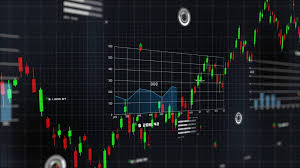
Exploring Crypto Trading Models
The world of cryptocurrency trading has undergone a rapid transformation over the past decade. As digital assets have gained popularity among investors and traders alike, multiple trading models have emerged to help individuals navigate the complexities of the market. In this article, we will explore various crypto trading models, their methodologies, and their implications for traders and investors. For those interested in the gaming aspect of cryptocurrencies, visit Crypto Trading Models https://surfweb3.com/gaming/ to find out more about how blockchain technology is shaping the gaming industry.
What are Crypto Trading Models?
Crypto trading models are frameworks that traders use to analyze market behavior and make informed trading decisions. These models can be based on fundamental analysis, technical analysis, or a combination of both. They help traders identify entry and exit points for their trades, assess risk, and manage their portfolios effectively.
Types of Crypto Trading Models
1. Fundamental Analysis Models
Fundamental analysis focuses on evaluating the intrinsic value of an asset. In the context of cryptocurrencies, this means analyzing factors such as the technology behind the coin, its use case, the team behind the project, community support, and market demand. Investors using this model often look for undervalued assets that have the potential for long-term appreciation.
2. Technical Analysis Models

Technical analysis relies on historical price data and trading volumes to forecast future price movements. Traders using this model analyze charts, patterns, and indicators to identify trends and potential reversals. Popular indicators include Moving Averages, Relative Strength Index (RSI), and Bollinger Bands, which help traders recognize overbought or oversold conditions.
3. Quantitative Trading Models
Quantitative trading utilizes mathematical models and algorithms to identify trading opportunities. This method often involves backtesting strategies against historical data to determine their effectiveness before deploying them in the live market. High-frequency trading (HFT) is a subtype of quantitative trading where algorithms execute trades at rapid speeds, often capitalizing on small price discrepancies.
4. Sentiment Analysis Models
Sentiment analysis involves gauging market sentiment through various sources such as social media, news articles, and forums. By understanding the collective sentiment of the market participants, traders can make informed decisions about when to buy or sell an asset. Tools and platforms aggregating sentiment data can assist in this analysis, providing valuable insights into how the market perceives a particular cryptocurrency.
Choosing the Right Model
The best crypto trading model depends on an individual’s trading style, risk tolerance, and market knowledge. For instance, a long-term investor might favor fundamental analysis for identifying promising projects, while a day trader might lean towards technical analysis and algorithmic trading to capitalize on short-term price movements. It is also essential for traders to remain adaptable and open to integrating various models into their trading strategies.
The Role of Technology in Trading Models

Technology plays a crucial role in the implementation of crypto trading models. With the rise of advanced trading platforms and tools, traders now have access to real-time data, enhanced charting capabilities, and sophisticated algorithms that simplify the trading process. Additionally, the emergence of artificial intelligence (AI) and machine learning (ML) is transforming how traders analyze data and make decisions, leading to more refined trading models.
Risks of Crypto Trading Models
While trading models provide valuable insights and can improve trading performance, they are not without risks. Market volatility, sudden news events, and unforeseen market shifts can render even the most reliable models ineffective. Therefore, risk management strategies such as stop-loss orders, position sizing, and diversification are essential to minimize losses and protect capital.
The Future of Crypto Trading Models
As the cryptocurrency market continues to evolve, so will the trading models that operate within it. Innovations in blockchain technology and financial instruments are likely to give rise to new trading paradigms that can enhance profitability and efficiency. Moreover, as regulations develop, the integration of crypto assets into traditional finance could lead to the convergence of trading models across both sectors, creating new opportunities for traders.
Conclusion
Understanding the various crypto trading models and their functionality can significantly enhance a trader’s ability to navigate the volatile cryptocurrency market. By employing a suitable trading model and remaining adaptable to market changes, traders can increase their chances of success. However, it is essential to incorporate risk management techniques and stay informed about market developments to achieve sustainable profits in the long run.